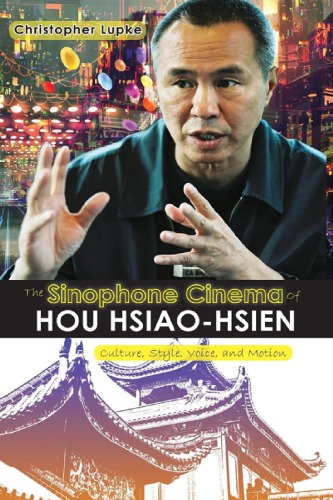

Most ebook files are in PDF format, so you can easily read them using various software such as Foxit Reader or directly on the Google Chrome browser.
Some ebook files are released by publishers in other formats such as .awz, .mobi, .epub, .fb2, etc. You may need to install specific software to read these formats on mobile/PC, such as Calibre.
Please read the tutorial at this link: https://ebookbell.com/faq
We offer FREE conversion to the popular formats you request; however, this may take some time. Therefore, right after payment, please email us, and we will try to provide the service as quickly as possible.
For some exceptional file formats or broken links (if any), please refrain from opening any disputes. Instead, email us first, and we will try to assist within a maximum of 6 hours.
EbookBell Team

4.8
94 reviewsHis breakout film A Time to Live, A Time to Die earned the Fipresci Award at Berlin in 1986 as well as the Special Jury Prize at Torino. Hou won the Golden Lion at Venice in 1989 for A City of Sadness, the first bold public expression of the 1947 February 28th Massacre in Taiwan. His uniquely crafted biopic The Puppetmaster received the Jury Prize at Cannes in 1993. He has garnered various additional honors at film festivals in Nantes, Locarno, Rotterdam, Singapore, and elsewhere. Hou’s oeuvre has attracted the attention of a wide range of critics, scholars, and film aficionados.
His work is technically pioneering, particularly for its signature approach to realism. His subtle interrogation of the aesthetics of Hollywood places him in a category with such greats as Satayajit Ray, Kitano Takeshi, Wong Kar-wai, Abbas Kiarostami, and Werner Herzog. His ability to capture and visualize such elusive phenomena as feelings of malaise, ambivalence and aimlessness in a world in which teleology is the only tolerable cultural logic, his elevation of the insignificant minutiae of daily life to objects of aesthetic sublime, his interrogation of cultural cohesion through the use of multiple languages and symbolic valences compels the serious student of cinema to study his work carefully.
Christopher Lupke’s book is a comprehensive treatment of Hou Hsiao-hsien’s entire oeuvre, including The Assassin which was recently released. Lupke was able to visit the set of The Assassin and includes rare photos of Hou on his film set. In addition to a detailed filmography and a substantial bibliography, the book also several interviews of Hou Hsiao-hsien that Lupke has translated into English.
This book is a must read for all interested in global cinema today. It also offers important information for those particularly interested in the society and politics of postwar Taiwan and Sinophone culture in general. It will appeal to readers concerned with issues such as the representation of ethnicity, gender, political repression, and the tensions between cities and the countryside. Anyone who wishes to understand radical innovation in contemporary world cinema must come to terms with the films of Hou Hsiao-hsien.